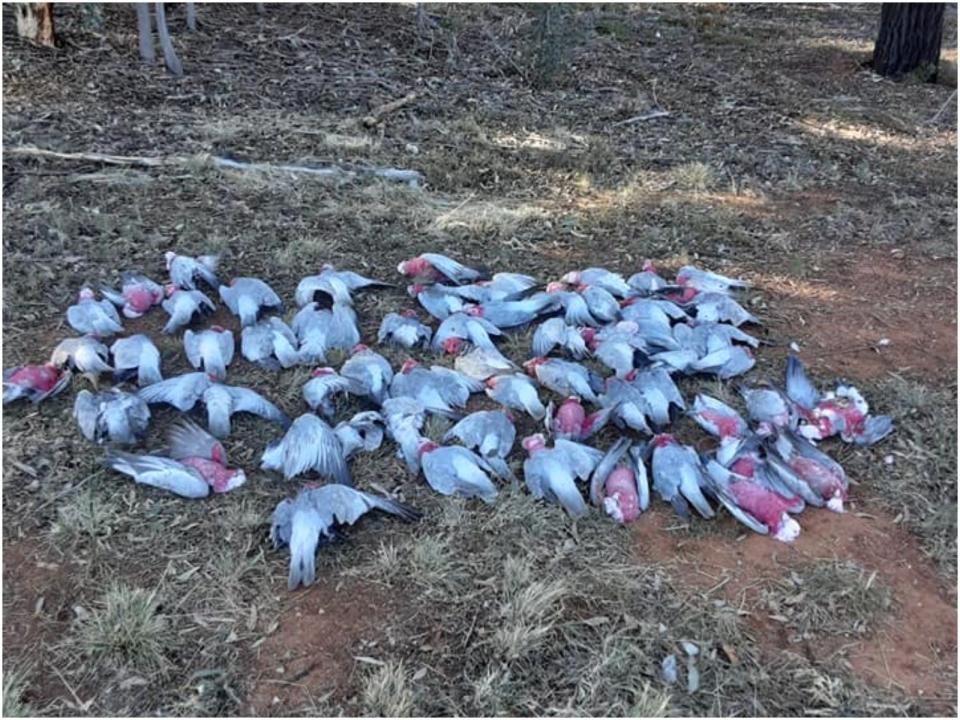The poison used to eradicate a biblical mouse plague ravaging southeast Australia is having a deadly effect on native wildlife

The poison that is being used to cull Australia's mouse infestation is damaging the native wildlife.
Experts say birds in New South Wales have died after ingesting poison intended for mice.
The infestation has ravaged large parts of southeast Australia.
The poisonous bait that is being used to eradicate a huge mouse plague ravaging large parts of Australia is having a deadly effect on native wildlife, experts have warned.
Earlier this week, an image of dozens of Galah Cockatoo birds dead in a cemetery in Parkes, New South Wales, went viral after it was shared on Facebook by Kelly Lacey, a volunteer for the NSW Wildlife Information, Rescue and Education Service (WIRES).
In the post, she said: "Seeing them sitting with each other under trees, knowing they were suffering until they have eventually died, has utterly broke me. Found 2 still alive, sadly 1 died on way home. (whatever the poison was it is more potent then I have experienced, and they have bled internally)."
Later during an interview with The Guardian, Lacey said that she found over 100 dead Galahs in the cemetery.
"I received a call from another WIRES member, saying 'I think you might want to see this, there are dead galahs everywhere,'" she told the newspaper. "My heart sank. When I arrived and began collecting all the dead bodies I was in shock."
In a statement released earlier this week, the New South Wales Environmental Protection Agency asked the public to "think carefully" about the location and amount of poisonous bait that is being used after an investigation by the organization found that dozens of birds in the state had died after ingesting the poison.
"The safe baiting of mice is an important step in reducing mice numbers and pesticide users must make sure they handle baits safely and are careful to always follow the directions on the label to protect their family, neighbors, domestic animals, wildlife, and the environment from harm," the statement read.

A mixture of poisonous bait and other deadly traps have been deployed across southeast Australia to deal with the huge rise in mice populations. Experts say that the infestation is the result of wet weather that has provided ample food for the mice, fueling their fast reproductive cycle.
Farmers across the region have felt the brunt of the infestation with reports of mice ravaging crops, destroying farming equipment, and causing electricity blackouts. The state government has called the plague "absolutely unprecedented" and warned that it could cause huge economic damage.
The NSW Farmers Association, an agricultural group in the state, estimated that the plague could cost farmers a total of 1 billion Australian dollars ($771,000) during the winter crop season, which runs from June to August, the AP reported.
Earlier this month, Adam Marshall, the agriculture minister for New South Wales, announced a $50m support package to help farmers that include the wide-scale use of bromadiolone, a poison described as "napalm" for mice.
"It'll be the equivalent of napalming mice across rural NSW," Marshall told the ABC. "This chemical, this poison, will eliminate mice that take these baits within 24 hours."
Read the original article on Insider

